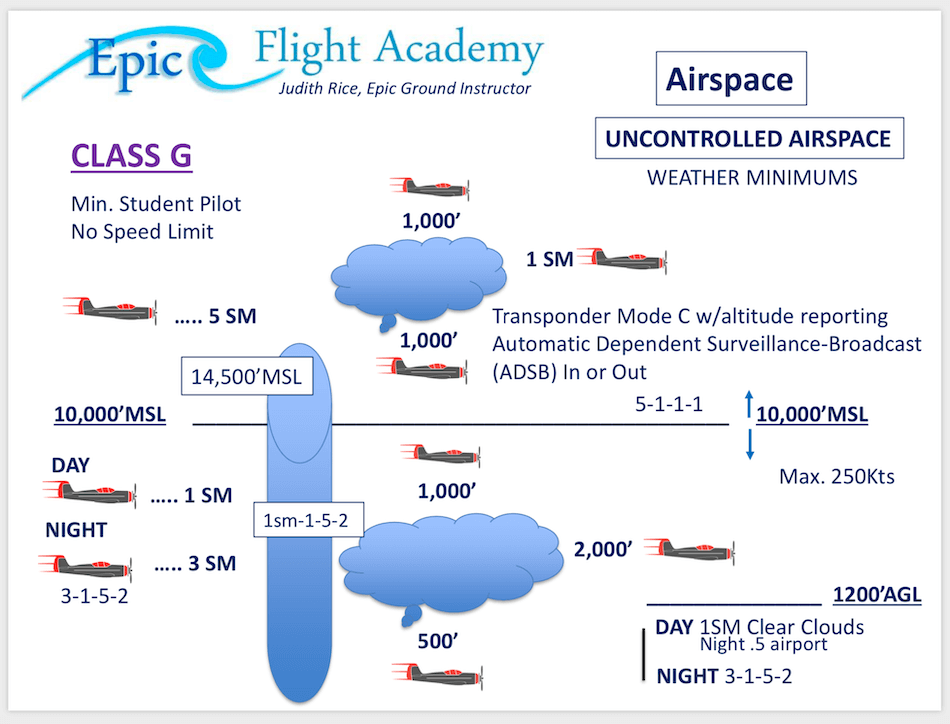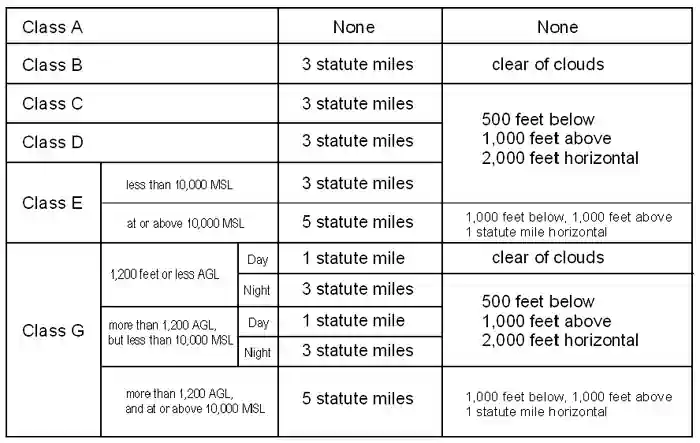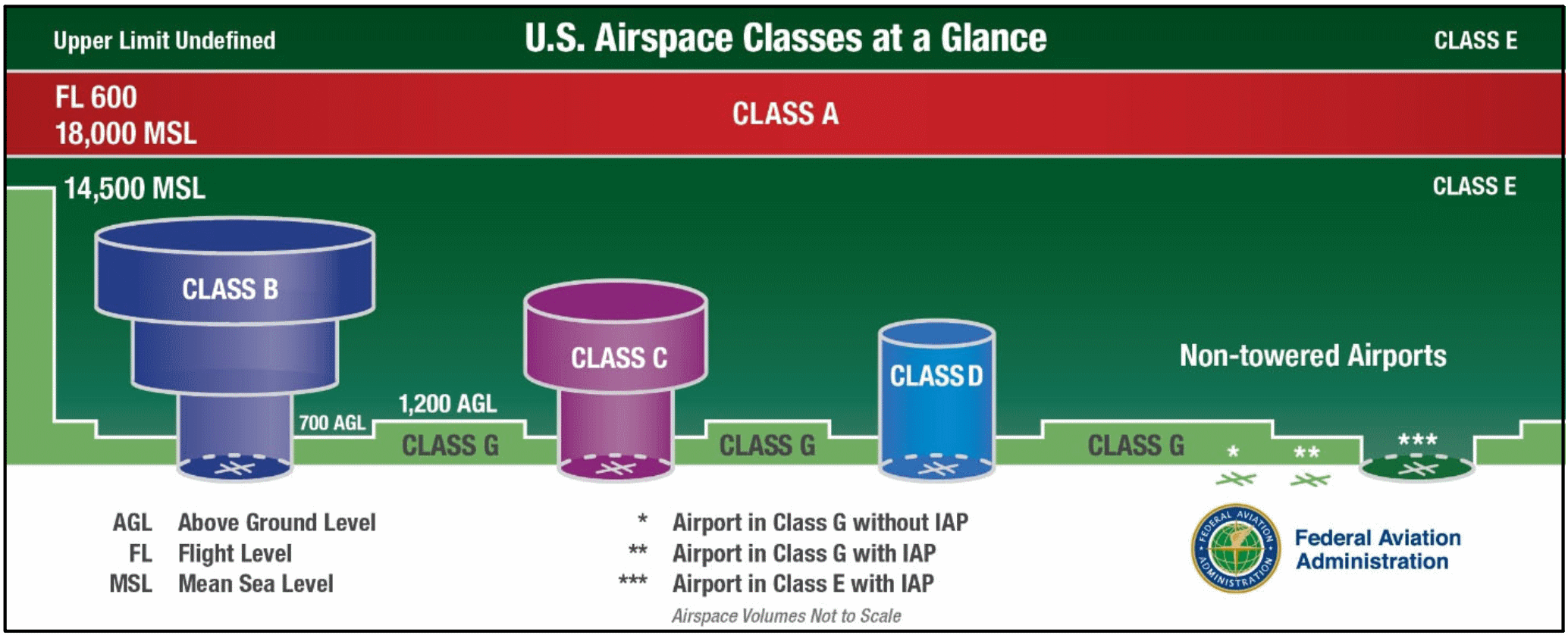class g airspace visibility requirements
Class G airspace is more prevalent and may be found at lower altitudes in less. On the other hand Class G airspace has four different sets of altitude-dependent minimums.
How To Remember Vfr Weather Minimums Bobbie Lind
Class G Is The Most Lenient And Confusing.
. If a Class D airspace lies under a higher class of airspace its published ceiling is actually part of the higher. Understanding the rationale behind the different requirements might help you remember them more easily. 135609 VFR ceiling and visibility requirements for Class G airspace.
3 statute miles 500 below 1000 above 2000 horizontal. Class A Airspace Cloud Clearance Visibility Requirements. B No person may operate a helicopter under VFR in Class G airspace at an altitude of 1200 feet or less above the surface or within the lateral boundaries of the surface areas of Class B Class.
Above 10000ft MSL the requirements are 5 SM visibility. Airspace Requirements for Weather Minimums. A Unless otherwise specified in the certificate holders operations specifications when conducting VFR helicopter.
For Class B C D and E airspace below an altitude of 10000 MSL the basic VFR weather. All operations in Class A Class B Class C and. Of airspace and altitudes.
Except as provided in 14 CFR Section 91157 Special VFR Weather Minimums no person may operate an aircraft. 1 Unless ground visibility at that airport is at least 3 statute miles. VFR flight is based on the principle of see and avoid.
Operating on or in the vicinity of an airport in Class G airspace. Class A Airspace Boundaries - FL180 18000 ft MSL up to and including FL600. ECFR Content 135609 VFR ceiling and visibility requirements for Class G airspace.
Student pilots must comply with 14 CFR Section 6189 a 6 and 7. Or 2 If ground visibility is not reported at that airport unless flight visibility during landing or takeoff or while. Pilots are reminded that in addition to altitude or flight level requirements 14 CFR Section 91177 includes a requirement to remain at least 1000 feet 2000 feet in designated mountainous.
None - Class A is all IFR. Class C Airspace Class D Airspace Class E Airspace Class G Airspace. The requirements are slightly less restrictive in Class G airspace with a less restrictive daytime visibility below 10000 feet MSL 1 statute mile only and below 1200 feet.
Or 2 If ground visibility is not reported at that airport unless flight visibility during landing or takeoff or while operating in the. A Unless otherwise specified in the certificate holders operations specifications when conducting VFR. 36 rows 1 Unless ground visibility at that airport is at least 3 statute miles.
At night in Class G between 1200 AGL and 10000ft MSL the visibility and cloud clearance are the same as Class CD. 12 rows No person may operate an ultralight vehicle when the flight visibility or distance from clouds is less than that in the table found below.
How To Remember Vfr Weather Minimums Bobbie Lind

Far Part 135 Sec 135 609 Effective As Of 04 22 2015

Vfr Cloud Clearances Pilot Training For Ga

Airspace Classes Explained The Ultimate Guide For Beginners
What Is The Minimum Visibility For Landing Quora
What Are The Basic Vfr Minimums Quora

Faa Airspace For Vfr Flight Youtube

Airspace Classes And Special Use Airspace Everything There Is To Know
What Are The Basic Vfr Minimums Quora

Uncontrolled And Controlled Airspace

Class G Airspace Explained Boldmethod
Regulations Vfr Minimums Learn To Fly Blog Asa Aviation Supplies Academics Inc



